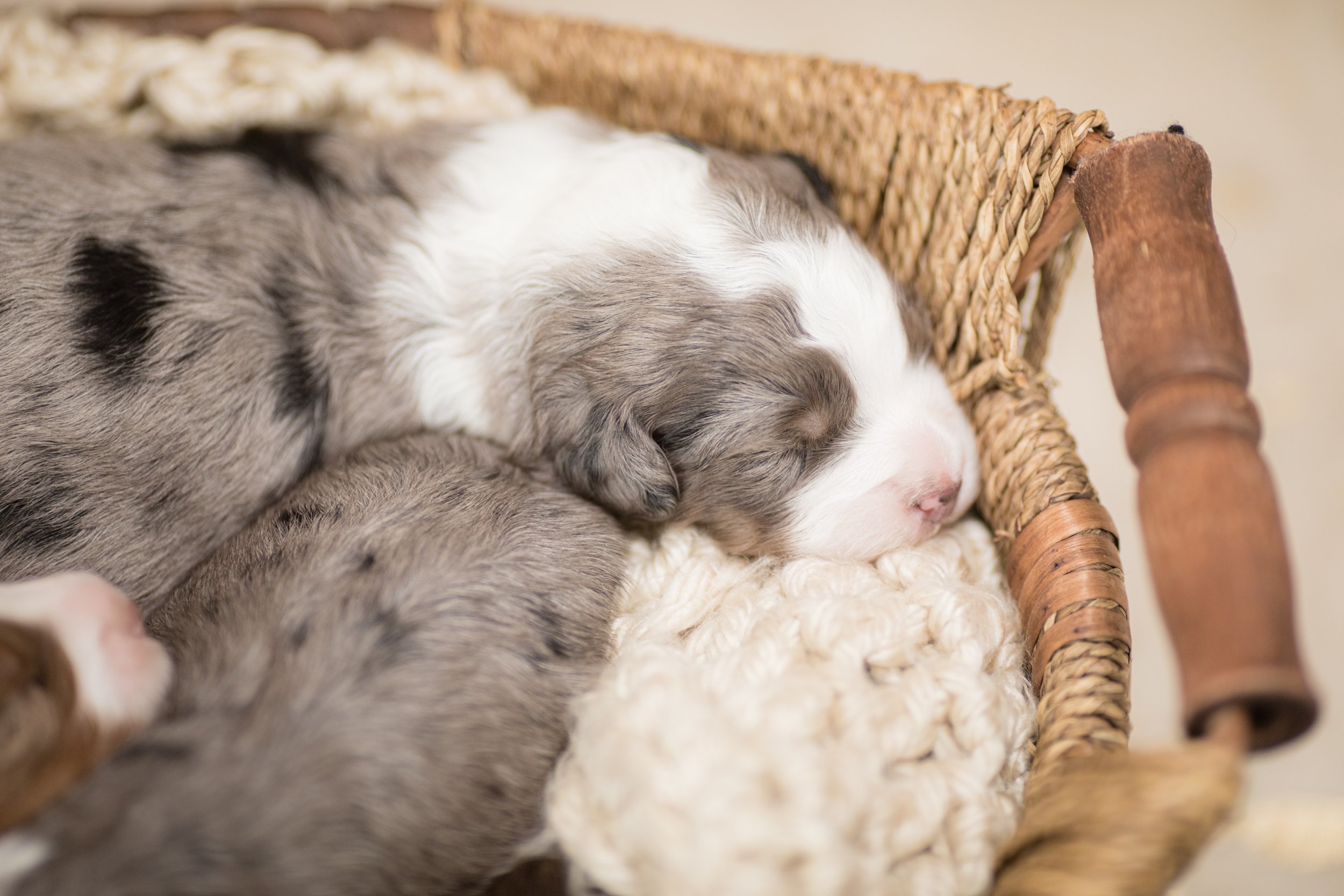What are “Double Doodle” Puppies?
Introduction
Ever pondered the outcome of blending two distinct doodle breeds? We did! That's where the intriguing term “Double Doodle” emerges. For instance, pairing a Goldendoodle with a Bernedoodle can result in Golden Mountain Doodles. Similarly, when Aussiedoodles are paired with Bernedoodles, the offspring may be classified as Double Doodles, given that both parents are authentic doodles carrying significant poodle genetics. Some breeders coined this term specicially for Goldendoodle x Labradoodle cross, but it has since expanded to AMD & GMDs and we’re sure there are several other unique combinations out there.
Characteristics
Double Doodles are a delightful crossbreed stemming from the fusion of two beloved doodle varieties. Their offspring showcase a diverse range of sizes and colors. Typically, these charming canines tend to inherit a higher proportion of poodle genes genetically compared to their two other parental lineages.
Why Double Doodle?
Crossing two distinct doodle breeds can result in what's known as a "designer" or hybrid breed. Here are some reasons why breeders might opt for this kind of crossbreeding:
Desirable Traits: Breeders aim to combine the best characteristics of both parent breeds, such as intelligence, hypoallergenic coats, temperament, and health, to create a new breed that inherits these favorable traits.
Variety: Crossbreeding offers diversity in appearance, size, and temperament. This variety appeals to people with different preferences for coat types, colors, sizes, or energy levels in a dog.
Reduced Health Issues: By mixing different breeds, breeders hope to reduce the likelihood of inherited health problems common in purebred dogs. This is called hybrid vigor or heterosis, where the offspring might have fewer health issues than their purebred parents. Reducing COIs is one of the missions of Stokeshire Designer Doodles.
Market Demand: Some hybrid breeds gain popularity due to trends or specific characteristics sought after by potential dog owners. This demand might drive breeders to create these designer breeds.
Innovation and Experimentation: Some breeders enjoy the challenge of creating new breeds. They experiment with different combinations to see what traits they can achieve or to create a unique dog breed.
Personal Preferences: Breeders or owners might have personal reasons, such as wanting a specific mix of breeds for their lifestyle, preferences, or experiences with certain breeds.

